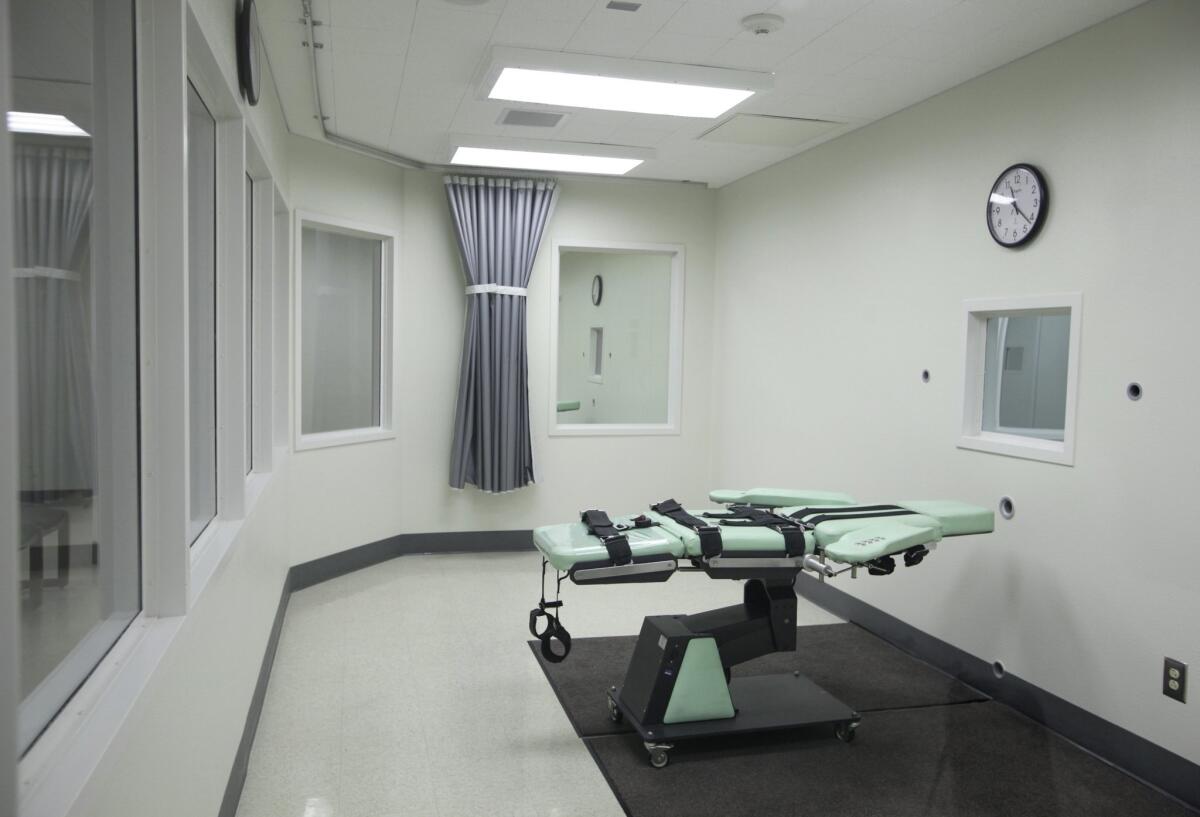Editorial: The shame of state-sponsored killing

- Share via
It’s remarkable — and heartening — that for all the attention paid to the death penalty this year, the country’s executioners had less business to tend than they have had since 1991. The final tally was 28 executions, carried out in only six states. Meanwhile, six death row inmates were exonerated this year (for a total of 156 exonerations since 1973), according to the Death Penalty Information Center. That’s a ratio of about one “Sorry, our bad” for every five people put to death.
In executing our own citizens, we align ourselves with such human rights violators as Iran, China and our close Mideast ally Saudi Arabia.
Not only did executions drop in 2015, but the number of people sentenced to death also hit an historic low, the center said. That could be due to a growing skepticism by jurors of a system susceptible to manipulation through coerced testimony or other misconduct (as explored by the Economist recently) — or there could be some other reason for a decline in convictions on capital punishment charges. Or perhaps fewer such cases are being brought in the first place. What is clear is that there’s no correcting an execution if later evidence shows the prosecution was wrong. The capital punishment system is expensive too, and that combination — a costly government policy that risks executing innocent people — gives even many conservatives pause, which was partly what drove the Nebraska Legislature to ban the practice in May.
Here’s some less upbeat news: Of the year’s 49 death sentences, 14 were delivered by California juries (Texas, which has put more people to death than any other state, accounted for only two new sentences), led by Riverside County with eight and Los Angeles County with three. Are murders really so much more heinous in Riverside County than elsewhere? That’s hard to imagine, and it points up a core problem with the capital punishment system: The decision on who receives a death sentence often has less to do with whether the defendant is “the worst of the worst” than it does with the proclivities of the prosecutors. The death penalty is a state-level policy, but county prosecutors make the case-by-case decision on whether to seek it, usually by weighing “special circumstances” prescribed in state laws. Remarkably, 2% of the nation’s more than 3,100 county-level jurisdictions (including Louisiana’s parishes and Alaska’s boroughs) account for the majority of death sentences, and only 15% account for all of the executions that have occurred since the death penalty was reinstated in 1976.
The death penalty is a stain on the nation. In executing our own citizens, we align ourselves with such human rights violators as Iran, China and our close Mideast ally Saudi Arabia. Conversely, more than 100 countries have banned the death penalty either by law or practice. Abolition is the direction of the future, and the U.S. should join.
One way to get there would be for the Supreme Court to decide that the death penalty fails to meet constitutional muster. A three-judge panel of the U.S. 9th Circuit Court of Appeals recently overturned District Judge Cormac J. Carney’s ruling that the lengthy delays built into California’s capital punishment system inherently make it cruel and unusual, and thus unconstitutional. The reversal was based on jurisdictional and judicial process issues, and we hope Carney’s underlying analysis gets a fuller airing.
The other and perhaps easier path to abolition is for states to ban the practice. That moves the fight from the courts, which have been sympathetic to the death penalty despite its failings, to the ballot box. California voters may get that chance in November; an initiative is circulating for signatures that would ban the death penalty and convert existing sentences to life without parole. Meanwhile, another is also circulating that would speed up the disgraceful system of state-sponsored killing, increasing the likelihood that a violation of the constitutional right to due process will occur and that the innocent could be rushed to execution.
There’s some reason for optimism. Polls show that a majority of Americans still support the death penalty, but that support is somewhat abstract. When offered a choice between death and life without parole, support for capital punishment decreases, some polls have found. That suggests there is ground to be won here, and that a rejuvenated and refocused campaign to end this abhorrent practice could gain some traction. It’s a worthy goal.
Follow the Opinion section on Twitter @latimesopinion and Facebook
More to Read
A cure for the common opinion
Get thought-provoking perspectives with our weekly newsletter.
You may occasionally receive promotional content from the Los Angeles Times.









